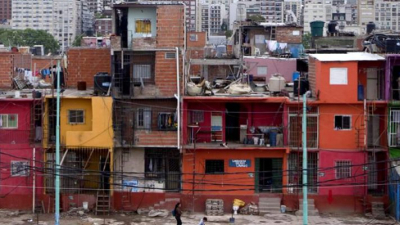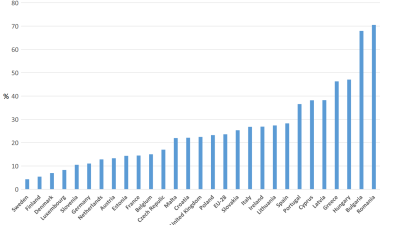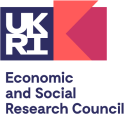In all the talk of tackling child poverty, one group has been largely ignored, the children of refugees and asylum seekers. Steve Crossley reports on the extent of poverty amongst this ‘minority within a minority` and the role that local agencies should play.
A new report, 'Written out of the picture', published this week by the North East Child Poverty Commission and the Regional Refugee Forum North East highlights the widespread incidence of poverty amongst refugees and asylum seekers, the ‘new underclass: the minority within a minority`(O’Neill & Hubbard). Because Asylum seekers are not allowed to work whilst their claims are being determined, most depend on Section 95 support, which is a lower rate of support than for UK citizens who are unable to work. It often works out at just over £5 a day (housing and utility bills are paid for separately).
According to researchers, this group ‘are forced to live on the ‘margins of the margins’ while waiting for their cases to be processed. Cut off from the world of work, and often denied decent housing, adequate medical provision or cultural services, many drift into a state of destitution, rely on charity hand-outs or are forced into an underground economy.‘(O’Neill & Hubbard)
Despite a growing acknowledgement that the support offered to asylum seekers in the UK effectively ‘traps’ them in poverty, the role of local services and the issue of poverty amongst individuals once granted leave to remain has received little attention from researchers or campaigners. Little central or local government attention has been paid to poverty amongst these groups, with government documents and statistics appearing to ‘miss out’ asylum seeking children.
Background
Tony Blair’s speech in 1999 when he committed to ‘end child poverty’, noted that poor children were ‘more likely to be from an ethnic minority family’. The speech had a strong focus on social justice and how the UK had changed since the Beveridge Report of 1942, but there was no other mention of ‘race’, ethnicity , diversity, migration or asylum.
A 2007 Public Service Agreement (PSA) Delivery Agreement to ‘halve the number of children living in poverty by 2010-11’ includes a footnote on page 3 which states that the agreement ‘does not specifically cover the children of asylum seekers’ (PSA, 2007). Local child poverty statistics, (HMRC) are based on the numbers of children in families who are ‘in receipt of out-of-work (means-tested) benefits, or in receipt of tax credits’, excluding asylum seekers. During the scrutiny process of the Child Poverty Bill (now the Child Poverty Act), the Joint Committee on Human Rights (JCHR) raised concern about the potential for ‘differential treatment’ of children not in ‘qualifying households’:
The beneficiaries of the duty to meet the income targets will apparently only be children in qualifying households. The legislation is therefore, on its face, designed to require policy-making to prioritise such children over others, including Roma children, children in children's home and asylum-seeking children.
The Child Poverty Act requires local authorities to produce a Child Poverty Strategy but no local authorities in the North East identified these groups in their local child poverty strategies published to date. Refugees are mentioned once in the first ever UK central government child poverty strategy whilst the asylum seekers are not mentioned anywhere. These omissions led one organisation to suggest that poverty amongst some groups was not being ‘eradicated’, but was being ‘written out of the picture’.
The role of local services
The role of local authorities in tackling child poverty is vital. As Winifred Holtby wrote in 1935,
Local government (is) in essence the first line of defence thrown up by the community against our common enemies – poverty, sickness, ignorance, isolation, mental derangement and social maladjustment.
The new report highlights the important role of local services in improving the lives of refugees and asylum seekers: local services - schools, libraries, GP surgeries, colleges and children’s centres – are ‘the first line of defence’ for asylum seekers and refugees.
Engaging with refugee and asylum seekers to hear their voice on the specific issues they face is an important consideration for local authorities. A report exploring Race, Crime & Justice amongst BME communities in the North East notes,
This is not in fact particularly difficult but it does require both the political will, broadly defined (i.e. a commitment to hearing the voice of the user), and the commitment of some, albeit limited, resources to ensure it is done effectively.
(Craig et al, 2012)
Involving service users in decision-making is in keeping with rights-based and asset-based approaches to tackling poverty: a ‘rights framework can increase societal understanding of poverty and serve to include, within policy making, the voices of those who endure poverty’ (Minujin & Nandy, 2012), whilst Professor Mel Bartley of UCL has suggested that:
Too often the way services are provided is patronising and disrespectful of people’s lives and experiences. This is most often felt as ‘not being listened to’ and being on the receiving end of highly prejudicial judgements. Hence, the capabilities of the poor and the disadvantaged are often overlooked and the approach is highly problem-focused and negative.
(Bartley, M. (2006)
The report includes a number of recommendations that local services may want to consider but the over-riding aim is to encourage service providers to start a discussion 'with' asylum seekers and refugees about their experiences of poverty, rather than continue a somewhat limited discussion 'about' them and/or 'without' them.
Steve Crossley is Regional Child Poverty Co-ordinator in the Institute for Local Governance, University of Durham
References
Bartley, M. (2006) Capability and resilience: beating the odds, London: UCL
download Capability and resilience
Craig, G., O’Neill, M., Cole, B., Antonopoulos, G.A., Devanney, C & Adamson, S (2012) ‘Race’, crime and justice in the North East region, Durham: Durham University
download RaceCrimeJusticeintheNorthEastFinalReport
HMRC, Revised local child poverty measure
Minujin, A. & Nandy, S. (2012) Global child poverty and well-being, Bristol: Policy Press
O’Neill, M. & Hubbard, P. (2012) Asylum, exclusion and the social role of arts and culture, Moving Worlds: a journal of transcultural writing, Asylum Accounts, 12:2
PSA Delivery Agreement 9: Halve the number of children in poverty by 2010-11, on the way to eradicating child poverty by 2020 (2007), London: TSO.



 PSE:UK is a major collaboration between the University of Bristol, Heriot-Watt University, The Open University, Queen's University Belfast, University of Glasgow and the University of York working with the National Centre for Social Research and the Northern Ireland Statistics and Research Agency. ESRC Grant RES-060-25-0052.
PSE:UK is a major collaboration between the University of Bristol, Heriot-Watt University, The Open University, Queen's University Belfast, University of Glasgow and the University of York working with the National Centre for Social Research and the Northern Ireland Statistics and Research Agency. ESRC Grant RES-060-25-0052.






